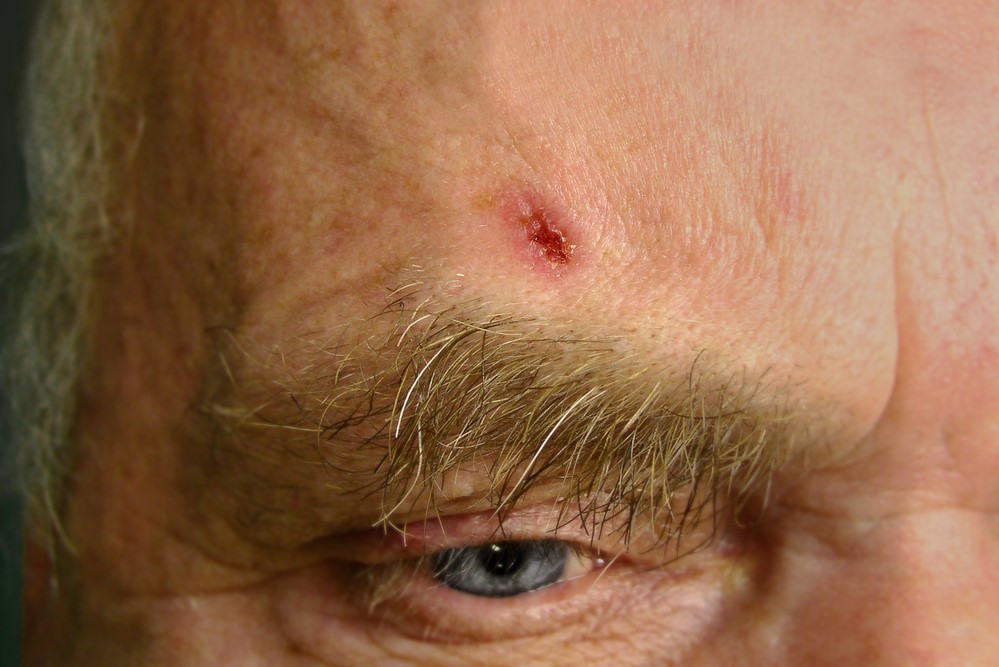
Basal cell carcinoma, how can it be recognised?
Basal cell carcinoma is the most common form of skin cancer that usually appears in areas most exposed to the sun, such as the head, face and back
What is Basal cell carcinoma?
Basalioma is a type of skin cancer that starts in the basal cell layer, the outermost part of the epidermis.
These tumours usually develop on sun-exposed areas, particularly the face, scalp, ears, neck, shoulders and back; prolonged exposure to ultraviolet (UV) radiation is believed to cause it.
How can one recognise a Basal cell carcinoma?
Basal cell carcinoma usually appears as a change in the skin, an abnormal growth or a sore that bleeds and does not heal.
It can present itself on the skin in various guises, but to recognise it, one only needs to observe a few features:
- a shiny, discoloured, transparent-like protuberance that allows a glimpse of tiny blood vessels;
- a brown or black, lentil-like lesion – with a slightly raised, translucent edge;
- a flat pink or red, slightly scaly spot with a tendency to indent in the centre;
- a white, waxy, scar-like lesion with an irregular shape.
The Basal cell carcinoma may grow over time (albeit very slowly), bleed and scab or turn into a painless ulcer.
How serious is Basal cell carcinoma?
For most people, basalioma is not life-threatening.
Unlike melanoma, which originates from melanocytes (pigment cells) and is very aggressive, this type of skin cancer develops locally and tends to remain localised and not spread to other parts of the body.
However, if left untreated, it can grow deep, touching nerves, blood vessels and even reaching the underlying bone, deforming it.
Therefore, early treatment remains the first weapon of basalioma prevention, together with periodic self-observation of the skin, not only of sun-exposed parts.
Read Also:
Emergency Live Even More…Live: Download The New Free App Of Your Newspaper For IOS And Android
Autoimmune Diseases: Care And Treatment Of Vitiligo
Epidermolysis Bullosa And Skin Cancers: Diagnosis And Treatment
SkinNeutrAll®: Checkmate For Skin-Damaging And Flammable Substances
Healing Wounds And Perfusion Oximeter, New Skin-Like Sensor Can Map Blood-Oxygen Levels
Psoriasis, An Ageless Skin Disease
Psoriasis: It Gets Worse In Winter, But It’s Not Just The Cold That’s To Blame
Childhood Psoriasis: What It Is, What The Symptoms Are And How To Treat It
Topical Treatments For Psoriasis: Recommended Over-The-Counter And Prescription Options
What Are The Different Types Of Psoriasis?
Phototherapy For The Treatment Of Psoriasis: What It Is And When It Is Needed
Skin Diseases: How To Treat Psoriasis?


